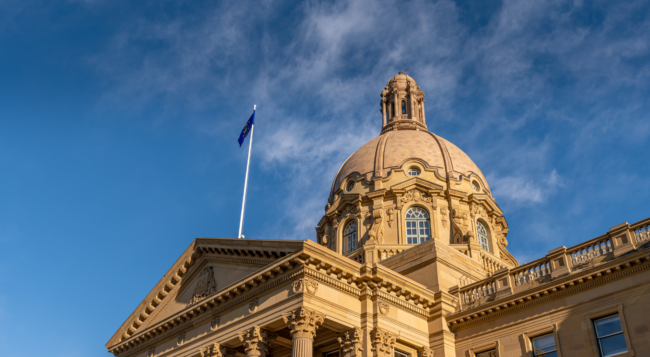Alberta’s new climate plan, released today, makes an important commitment to achieve net-zero emissions in the province by 2050. It’s the first time that an Alberta government has committed to net zero, which sends a strong signal in support of new low-carbon jobs, investment, and economic growth.
Combined with measures to continue strengthening the province’s industrial carbon pricing system and further reduce methane emissions, the new climate plan is a serious step towards developing Alberta into a diversified, low-carbon energy powerhouse.
“With the release of this climate plan, the debate about whether or not to embrace a low-carbon Alberta economy is over,” said Clean Prosperity Western Director Adam Sweet. “Now we can focus on figuring out the best way to build it.”
Although the plan commits to net-zero emissions, more detail is needed to ensure its success.
“What we need now is a set of clear milestones that show how the province will reach its 2050 net-zero emissions goals,” Sweet said. “Otherwise this plan risks being an aspirational document rather than a roadmap to a low-carbon future.”
“With the release of this climate plan, the debate about whether or not to embrace a low-carbon Alberta economy is over. Now we can focus on figuring out the best way to build it.”
Clean Prosperity Western Director Adam Sweet
The document released today, the Emissions Reduction and Energy Development Plan, affirms Alberta’s commitment to strengthen its industrial carbon pricing system, TIER, including by increasing the price of emissions to $170 per tonne in 2030.
“Investors need greater certainty about the industrial carbon price to make the low-carbon investments that our province needs,” Sweet said. “The province’s commitment to a price of $170 per tonne by 2030 helps deliver that certainty.”
A strong TIER carbon market incentivizes low-carbon and decarbonization projects, which are already bringing investment and jobs to Alberta — for example, in blue hydrogen production. With the right policies in place, Alberta is positioned to compete for billions of dollars in new low-carbon investment.
Firms depend on future revenues from selling TIER carbon credits to justify today’s big low-carbon investments. The Alberta government should look closely at whether the TIER system is optimally configured to sustain a healthy demand for those credits. This includes rigorous modelling of the TIER carbon-credit market to anticipate — and avoid — risks of credit oversupply, which could crash prices and undermine the case for low-carbon investment.
There are other ways that the government can position the TIER market for continued success, including by requiring the regular disclosure of aggregated carbon-credit transaction data.
A more transparent TIER market is needed to prepare Alberta firms to sign new carbon contracts for difference tied to the average price of carbon credits. These are contracts that act as insurance on the future value of credits. They help to de-risk big decarbonization investments so that Alberta companies can start building major low-carbon projects today.
Contact: media@cleanprosperity.ca




